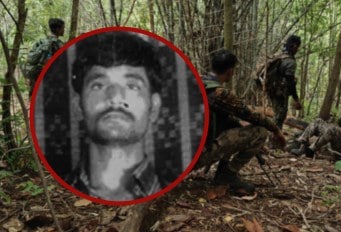the recent elimination of Nambala Keshava Rao, widely known as Basavaraju, marks a pivotal moment in India's decades-long struggle against Maoist insurgency. Once deemed nearly invincible, Basavaraju's downfall reflects a combination of strategic advancements, technological integration, and intensified governmental resolve. Basavaraju, a BTech graduate from Andhra Pradesh, emerged as a central figure in the Communist Party of India (Maoist). Trained in explosives and guerrilla warfare—reportedly with assistance from former LTTE operatives—he was instrumental in orchestrating some of the most devastating attacks against Indian security forces. Notably, he masterminded the 2010 Dantewada massacre, where 76 CRPF personnel lost their lives, and the 2013 Latehar ambush, which involved the use of a photosensitive IED concealed within a slain soldier's body . Ascending to the position of General Secretary in 2018, Basavaraju succeeded the ailing Ganapathy. Under his leadership, the Maoist movement adopted a more aggressive and militarized approach, focusing on expanding influence in regions like Chhattisgarh, Odisha, and Maharashtra . the Turning Point: Operation Black Forest On May 21, 2025, Indian security forces launched "Operation Black Forest" in the dense Abujhmarh forests of Chhattisgarh. This meticulously planned operation, based on precise intelligence, resulted in the elimination of 27 Maoists, including Basavaraju. the operation also led to the recovery of a significant cache of weapons and the arrest or surrender of numerous insurgents across Chhattisgarh, Telangana, and Maharashtra . the success of this operation was attributed to enhanced surveillance capabilities, including drone technology and improved communication interception, which allowed for real-time intelligence gathering and strategic planning . Factors Leading to the Unthinkable Success 1. Technological Advancements: the integration of drones, UAVs, and sophisticated surveillance systems provided security forces with unprecedented access to real-time data, enabling precise operations in challenging terrains. 2. Enhanced Intelligence Gathering: Improved human intelligence networks and data analytics allowed for the identification and tracking of high-value targets like Basavaraju. 3. Strategic Deployment: the establishment of security camps in vulnerable areas served as both operational bases and centers for community engagement, fostering trust and cooperation with local populations. 4. Political Will: A concerted effort by both central and state governments, with clear objectives and timelines, underscored the commitment to eradicating Maoist influence. Implications for the Maoist Movement the death of Basavaraju has dealt a significant blow to the Maoist insurgency. the CPI (Maoist)'s central committee has reportedly dwindled to just 18 members, the lowest in its history, indicating a leadership vacuum and potential organizational disarray . While this development marks a turning point, experts caution that underlying socio-economic issues in affected regions remain unaddressed. Sustainable peace will require continued development efforts, community engagement, and addressing the root causes that have fueled the insurgency for decades.
From the Forests to the Battlefield: The Final Chapter of Basavaraju
By Sobiya Banday•
